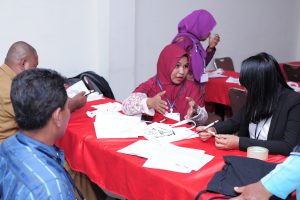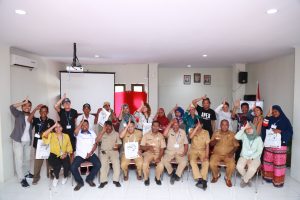
Creating Marine Protected Areas (MPA’s ) is an incredible way to conserve marine life and habitats. Yet, many MPA’s come short of their goals and lack effectiveness due to disagreements and fall outs amongst local communities and other stakeholders involved.
Stakeholder engagement throughout the entire development process of a marine protected area ( MPA ) or new protection policy is crucial for successful implementation. Stakeholders may include local communities, local government, other organizations working in the area, resource users, etc. Each group of people that have an active involvement in an area that is looking to be protected needs to be involved in the decision-making process so that their livelihoods are not negatively affected by the new policy put in place. The goal is to make impactful decisions while remaining responsive to the needs, interests, and concerns of the public that may be affected by those decisions.
It’s no secret that changes in marine resource government and management can sometimes mean loss of resource use rights and access for traditional fishermen and other local communities who depend on the marine resource. This type of change can cause big drama and lead to local communities fighting against the implementation of MPA’s as they see themselves losing out, instead of benefitting from the new policy. This creates a barrier to success. There needs to be a communal interest and support towards the plan development so that all communities involved reap the benefits.
Involving stakeholders in Marine Protected Area development can create some of the following benefits:
Raja Ampat is the most successful MPA in Indonesia. Stakeholder engagement was at the core of this MPA development right from the very beginning. This has played a massive role in the success of the marine park. As the most biodiverse marine ecosystem on planet earth, home to numerous threatened species, and an important cetacean migratory corridor, Raja Ampat is a global conservation priority. Within the region, many local communities depend on natural resources for food and income. A zoning plan was put in place which met both the conservation goals for the region and avoided local fishing ground. To come up with this plan, a myriad of stakeholder consultation activities took place. These activities included :
This stakeholder involvement process has led to increased compliance towards the implementation of the MPA resulting in ineffective management of the region – benefitting both local communities and biodiversity.
We at Thresher Shark Indonesia have conducted various stakeholder meetings to better understand the stakeholder’s interests who work within the Alor region.


These meetings stakeholders meetings were attended by East Nusa Tenggara Province Government (Department of Marine and Fisheries), Alor Region Government (Department of Marine and Fisheries, Department of Planning, Research and Development, and Department of Tourism), Alor People Council, Village Leaders, Non-governmental organization (World Wildlife Fund for Nature Indonesia), Fisherman community group, and private sector (Dive center, Dive Resort and Tourism Operator). From this meeting, we found out the interest of each stakeholder and alternative solutions to protect the thresher shark in the Alor region while incorporating stakeholders’ interests. This crucial information on alternative solutions has been passed onto the regional government and is aiding the government in designing an effective Thresher shark protection policy in Alor.
Read more about our stakeholder meetings in this Blogpost !
Written By: Etoile Smulders